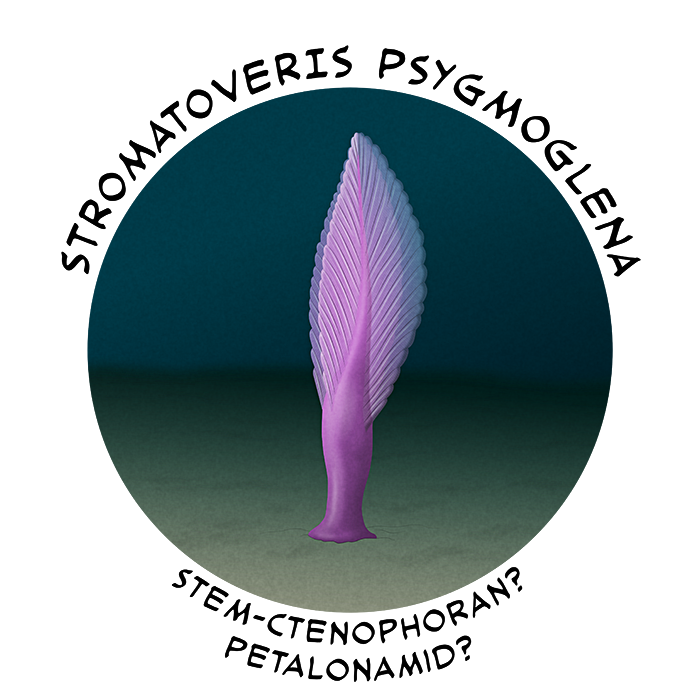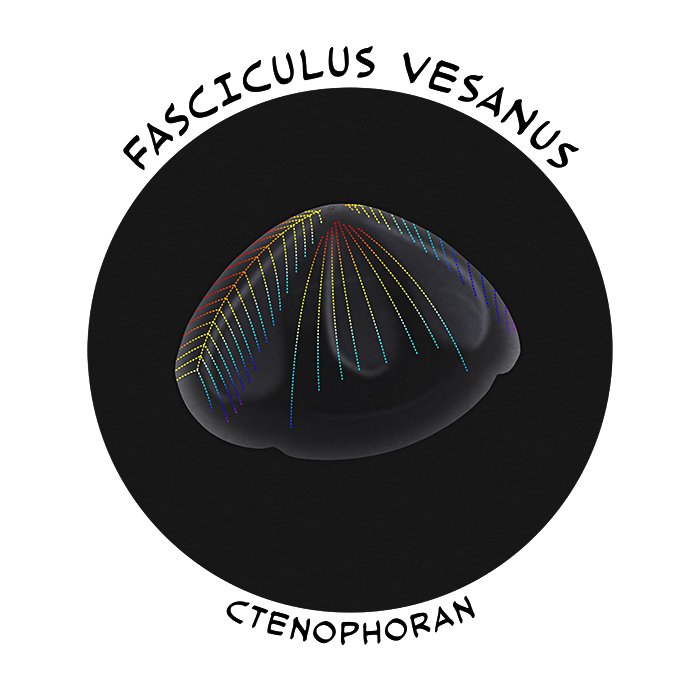Much like the sponges, the ctenophores (commonly known as “comb jellies”), are one of the oldest animal lineages, but their exact position in the evolutionary family tree is a little uncertain. Traditionally they’re placed between sponges and all other animals, as the earliest branch of the eumetazoans, but some studies have suggested that they might be much more ancient, possibly branching off before even the sponges did.
And while their fossil record is poor due to their soft gelatinous bodies, some of what we do have is starting to hint that their ancestry was very different from their modern jellyfish-like representatives – and they might even have links to some weird Precambrian creatures.

At first glance Stromatoveris psygmoglena from the Chinese Chengjiang fossil deposits (~518 million years ago) doesn’t even look like a ctenophore, instead more closely resembling a sea pen or one of the frond-like Ediacaran organisms. Up to 10.5cm tall (~4″), it was a sessile animal that lived attached by a holdfast to the sea floor, with up to four branched “petaloid” fronds that would have been used to catch food particles in the surrounding water.
It’s been interpreted as a comb jelly relative based on the possible presence of cilia on its fronds, suggesting that the group may have originated as sedentary suspension feeders and later evolved a free-swimming mode of life. Along with the discovery of other fossils that might be sessile ctenophores, and a lineage of swimming forms with spiny skeletons, it’s definitely seeming that the early evolution of this group was much stranger than expected.
However, Stromatoveris also might not be a comb jelly at all, and instead might really be a Cambrian representative of the fronded Ediacaran animals it so closely resembled. More recent studies of additional fossils suggest that it was part of a group of early animals called petalonamids, closely related to the weird fractal-branching rangeomorphs.
…But, of course, there’s always the possibility that both relationships are correct, and that the Ediacaran frond animals were actually early ctenophores – an idea originally proposed back in the early 2000s, before Stromatoveris had even been discovered.

Other Cambrian ctenophores were much more recognizable, but also had much larger numbers of comb rows on their bodies.
Fasciculus vesanus had one of the oddest arrangements, with two sets of long and short rows totalling 64 compared to modern ctenophores’ 8. Known from the Canadian Burgess Shale deposits (~508 million years ago), it measured about 11cm in diameter (4.3″) and was either a very rare member of the ecosystem or just very rarely fossilized, with only a single specimen ever found.
